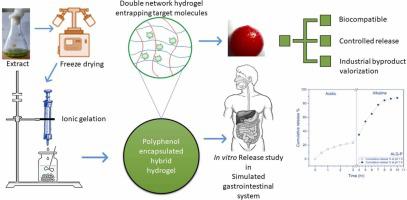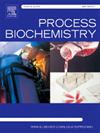Formulation of pH-responsive double-network hydrocolloid-based hydrogel matrix for encapsulation of bioactive polyphenols obtained from fruit juice industry byproducts
Abstract
The peel of Citrus limon is a colossal organic byproduct of the juice industry containing a significant quantity of bioactive polyphenols with diverse therapeutic potentials. As they are often underutilized the present investigation aims to valorize and promote the utilization of these polyphenols through encapsulation in a hydrocolloid-based hydrogel matrix for prolonged shelf-life and sustainable delivery. The hydrogels were prepared by blending sodium alginate and pectin through ionotropic gelation which achieved ∼86.72 % polyphenol encapsulation efficiency. The polyphenol-encapsulated hydrogels had maintained the shelf life and effectively preserved >95 % of polyphenols at 30 °C with no discernible variation for >30 days. Multiple physicochemical investigations were performed on the prepared formulation. Additionally, the release kinetics of polyphenols from beads were examined in a simulated gastrointestinal environment. The result showed that ∼87.54 % of entrapped polyphenol was released after 9 h and the pattern was found controlled release type and pH-responsive. The degree of fluctuation of a few specific polyphenolic compounds was noted and evaluated using principal component analysis. Furthermore, the encapsulating procedure protected a considerable amount of antioxidant activity (>60 %) while demonstrating good hemocompatibility. Therefore, the produced formulation may be used by the juice industries to create a valorization step using the byproduct.


 求助内容:
求助内容: 应助结果提醒方式:
应助结果提醒方式:


